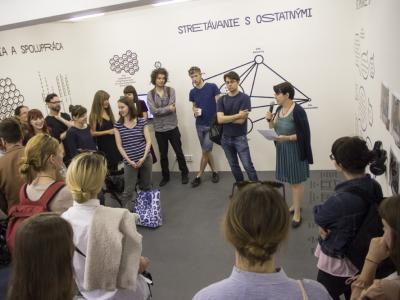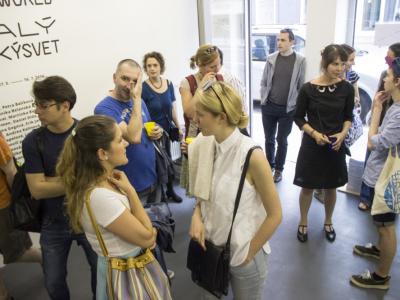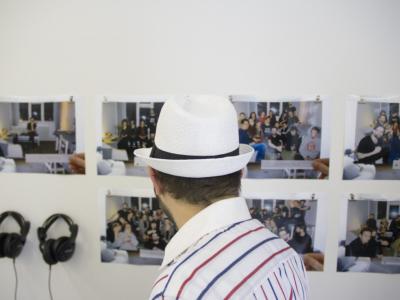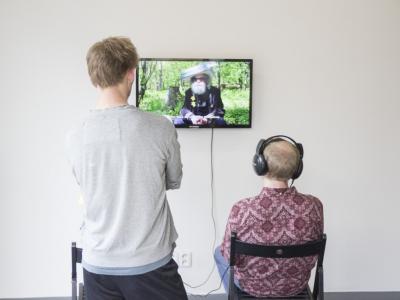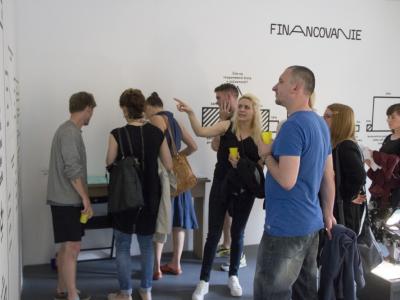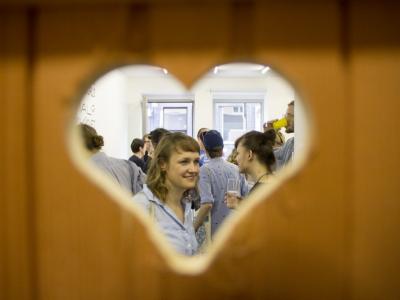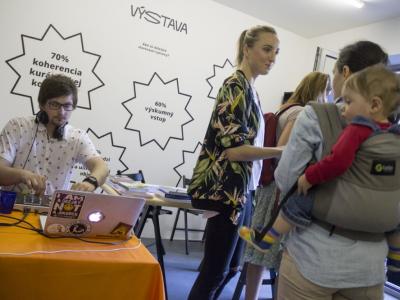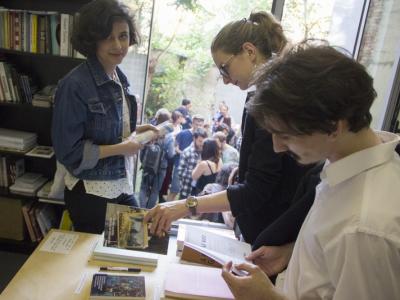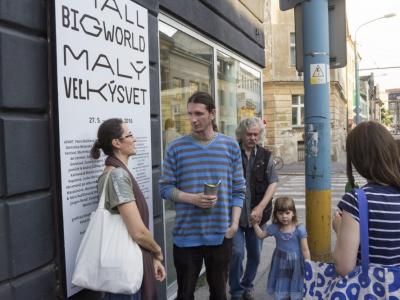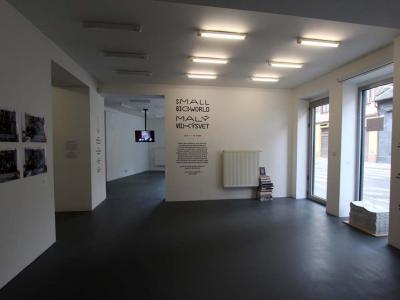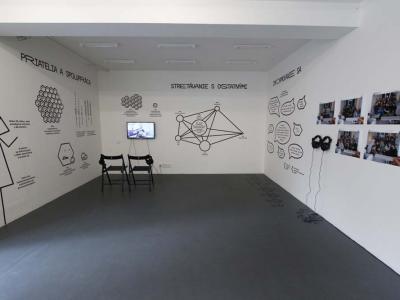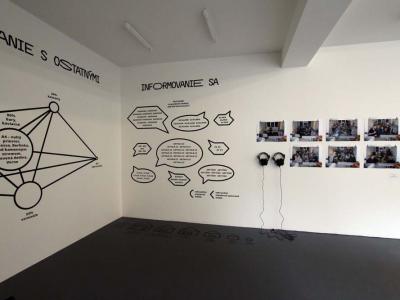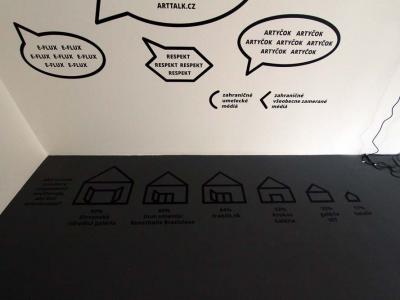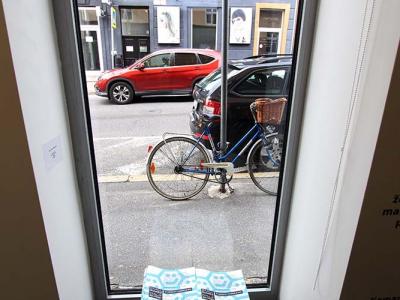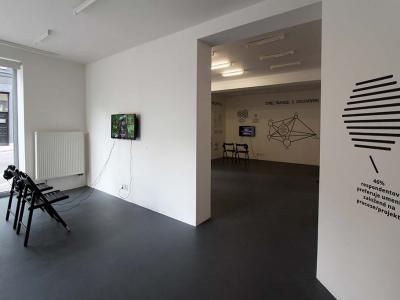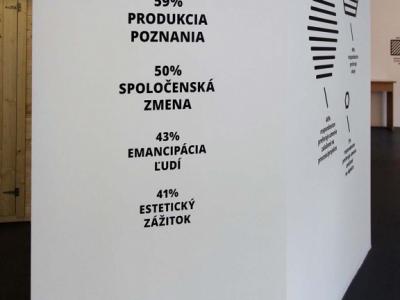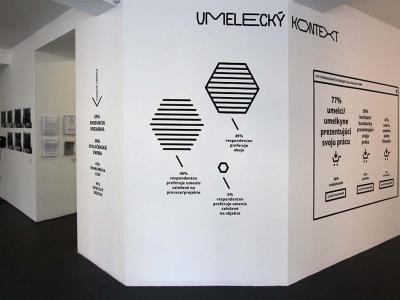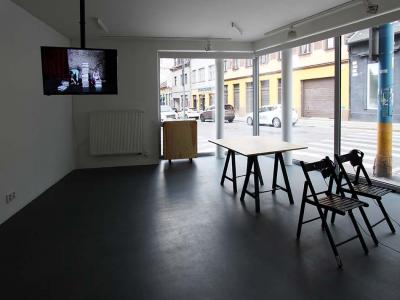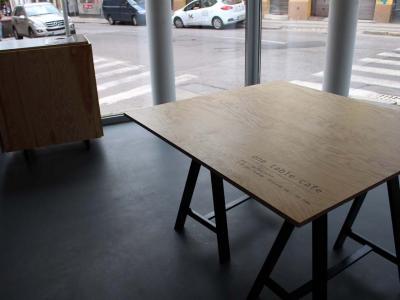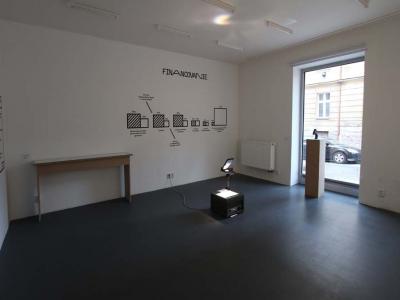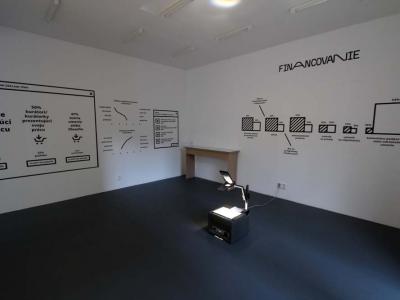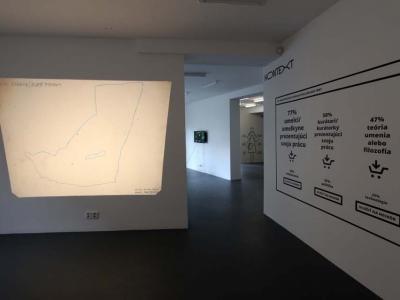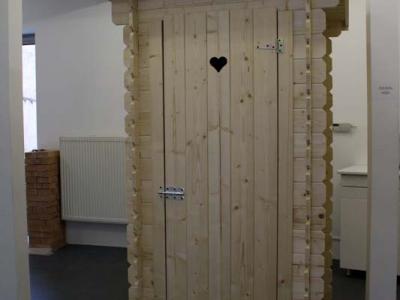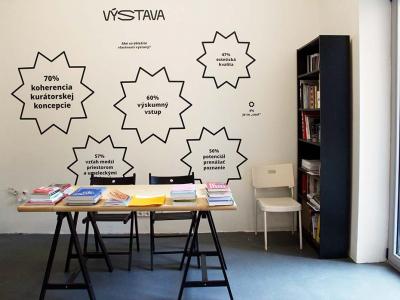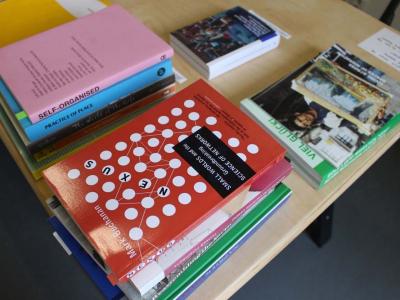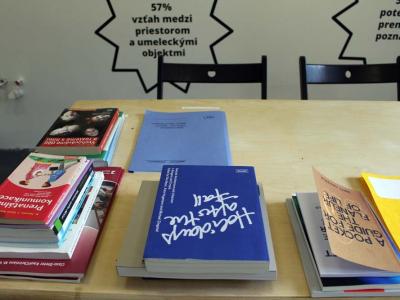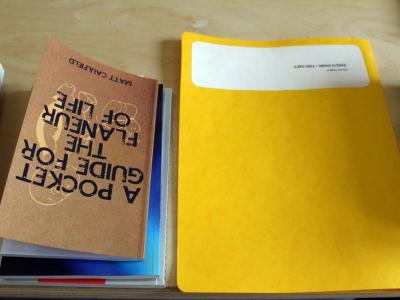Small/Big World
A project about curiosity, friendship, connectedness and more
Judit Angel
According to network theory, nothing happens in isolation.(1) Society – and this also applies to the art world – is made up of small groups of people, circles of close-friends, in which everybody knows everybody. A few external links connect these groups and prevent them from being isolated. These are the so-called “weak-ties”, ie., links to people who frequent different places, get information from different sources, and function as bridges in the group’s communication with the outer world.(2) While living in a community characterised by strong ties, where people have similar norms, values and interests provides us with a sense of stability and embeddedness, the scarcity of links outside the group runs the risk of disconnection through a lack of new information. Weak ties connect not only individuals, but different and distanced worlds, and they are essential for holding together the social network. Moreover, they seem to be responsible for the fact that actually we live in a small world, where the path-length between two distant nodes of the network is rather short, as a result strangers can be linked by a short chain of acquaintances. However, even if short connections do exist, they practically remain invisible until we discover them due to some chance occurrence. The situation is similar with weak ties, which are present in everyone’s circles, but their significance depends on how far we cultivate and activate them. On the other hand, as not all weak ties function as bridges, that is, connections between different environments/worlds, a community needs specific ways and contexts in which people may create such contacts.(3)
The idea of a project centred on the group dynamics of the Bratislava art scene stems from my own experience of getting acquainted with it. As preliminary research, I interviewed around fifty artists, curators and other cultural agents in order to map their views, concerns and desires. When questioned about what they lack or would like to change in the local art scene, my interviewees frequently referred to the sense of enclosure in small, self-centred groups as a negative aspect. Though fragmentation in small groups is a common characteristic of all art scenes, this image settled in my mind, urged me to undertake further mappings and to develop a pro-active format designed to valorise strong ties between the members of the scene, while facilitating the building of new connections.
Starting from these premises, the Small/Big World project was conceived in order to offer the Bratislava art scene a communication and collaboration platform, where people can creatively use the benefits of already existing relations, such as friendship, and also open them up to new ties and horizons. While being grounded in the art scene, the project favours interdisciplinary connections and encounters beyond the art world. Bratislava has been understood as the framework or sample field of the project, without identifying it with the Slovak art scene as a whole. Part of the general project consists of an exhibition and events taking place in tranzit. sk, while further artist projects are realised in Café Berlinka, HIT Gallery, Academy of Fine Arts and Design, Mladost’ Cinema, Karpatská Street and its vicinity, Bajkalská Street, Fajnorovo nábrežie and Areál zdravia (Health Area) Zlaté piesky. The processes of research and working with artists have both had an important role in the project. Together with sociologist Zuzana Révészová, an online questionnaire was launched to map the characteristics of the Bratislava art scene with a focus on socializing and collaboration, the relationship with foreign cultural milieus, meeting places, ways of getting information, preferences in art and opinions about art’s function, institutional needs, perception of the actual atmosphere and imagining an ideal art community, and finally, the financing of contemporary art.(4) Though in statistical terms the number of respondents was rather small (74) and their answers cannot be generalised for the whole Bratislava art community, they have significant value as a source of information.
The quantitative survey was complemented by short interviews made by Lucia Gavulová with selected actors of the Bratislava art scene, who were asked to characterize it, evaluate its positive and negative facets, and point to an aspect which they’d definitely like to change.(5) The results of the two inquiries converge in many respects such as the dominance of the local language in inter-personal relations and professional communication, the relative scarcity of international contacts, hence a perception of peripherality as well as the need for more openness, collaboration, constructive criticism and more institutional support for art. On the other hand, there is an awareness of the scene’s not yet developed potential, the surfacing of more independent initiatives and the tendency towards joint efforts in improving the conditions for the development of culture. The two surveys shed a different light on the phenomenon of grouping along the lines of close-friend circles and/or similar interests. Through the online questionnaire we ascertained the importance of strong ties in artists’ collaborations and the level of interest in interdisciplinarity. The interviewees’ answers range from noting the scene’s fragmentation into closed or competing groups to the more neutral image of segmentation into rarely merging micro-scenes. From the interviews we also learn about the advantages, challenges and risks of living in a small scene, as well as about the dominant character of the national discourse in defining the framework of cultural production and reception.
Part of the curatorial concept has been using the online questionnaire as a data-base for the infographics which cover the walls of the exhibition in tranzit.sk, and provide a frame-work for the participants’ projects. Developed by graphic designer Katarína Balážiková, the infographics represent another layer of data interpretation that combines self-reflection with playful-irony, and visualizes the relation-ship between “small” and “big” as flexible. The video interview with network scientist Albert – László Barabási displayed at the beginning of the exhibition has an introductory function: it describes the social network by drawing a parallel with other network-based complex systems (the Internet, the economy and biological systems), highlights community, linking and interaction as generic properties of networks, and elaborates on contemporary art as a system in which value is created by a network. Concerning the relation be-tween the fragmentation of the Bratislava art scene and the feeling of enclosure mentioned by a number of the interviewees, according to Barabási the question lies in whether this enclosure leads to “the creation of value, that later on, or at the same time, could be appreciated by the wider community,” that is, whether “this enclosure acts to shut down the flow of information, closing it in and blocking evolution, or is this closure actually meaningful for letting ideas develop in an unperturbed way.”(6)
The project started with an initial working group made up of artists, curators and re-searchers who were invited to add further individuals and groups. The participants were invited to work with topics such as friend-ship as practice, as a form of co-working, collaboration outside one’s close circle and the art field, encounter as a chance element of existence, and sharing as the re-definition of interpersonal relationships around a collective dimension.(7) Rather than being thematised, these concepts have been built into the structure of the participants‘ projects, as for example, where the active dimension of friendship is present in the case of artist duos or groups, in which encounters are produced, formats for collaboration and sharing are created. The resulting conceptual – structural tissue of the overall project is dense, with many overlaps, similar to an organically developed network with nodal points.
The first level of the overall project involves activities such as testing the group dynamics of the project participants by creating a common ground for interaction, including through a party held in the author’s private place (Peter Barényi), and taking the “six degrees of separation” property of networks as a structuring principle in a quest for person-al contacts within the highly canonized art world (the group Marína Abramovič po sebe neupratuje). Another level is represented by the attempt to map connections between individual actors of the local art scene, their circles of friends and wider public (Eliška Mazalanová), inquiries into a certain category of “professional” exhibition goer (Andrea Kalinová), and the use of a pop-up café set up in the exhibition space as an observation tool and communication platform with the visitors (Daniel Dida).
A methodological “opening up” – towards interdisciplinary connections, life situations, different publics and contexts - can be taken as the common denominator of several other artist projects. This is trace-able in the commentaries on the art world based on the metaphor of sports exercises, a collaborative work between visual artists Marianna Mlynárčiková & Nóra Ružičková and actresses from Divadlo z Pasáže. Two interventions in public space take the form of unexpected encounters: one represented by an unusual billboard pointing to connections between art, science and philosophical questions (Martin Vongrej), the other shedding a different light on an otherwise common situation, indicating its acute implications (Erik Janeček & Andrej Žabkay). Operating with a shift in positions, the group APART has undertaken a curatorial role by organising an international exhibition and program in HIT Gallery, Academy of Fine Arts and Design and Mladosť cinema, thus expanding the context of the general project and adding further connections with phenomenology and media, cognitive science and visions of the future. The practice of “opening up” takes on an overtly topographical dimension in Andrea Kalinová and Martin Zaicek’s project, which analyses the urban recreational area of Zlaté piesky, a specific micro-zone with a varied social strata and connected narratives. This dimension is taken even further by Jürgen Rendl, who regularly designs his “escape routes” from the city, the practice of hitchhiking providing him with the opportunity for random encounters, and developing a personal kind of social geography.
Sharing as a form of interaction and the strengthening of social ties is part of the projects built around specific topics such as parenthood (Jana Kapelová), multiculturalism (Lenka Kuricová and the Living Library) or a particular area marked by the crossroads of Šancová, Karpatská and Žilinská streets, which is the neighbourhood of tranzit.sk (Dominika Belanská & Nomadic Arts Festival team). Whether they deal with the art community, the diverse actors of the local neighbourhood (artists, curators, NGOS, res-idents) or meeting people with different life stories, all these projects aim to create possibilities for sharing information, experiences and emotions. Sharing food as a means of socialisation gets an additional layer through the questioning of the social status of artists in Martinka Bobriková and Oscar de Carmen’s project. Last but not least, the small library containing a bibliography proposed by the project participants, installed in the exhibition space of tranzit.sk, stands for the sharing of knowledge. Among the proposed readings, a particular place is held by Zuzana Gogová’s essay on forms of material and non-material exchange between local people and monastery communities in the context of a Serbian village, examined through the concepts of gifts and reciprocity.
At the end of this account of the motivations, aims, themes and structure of the Small/Big World project one might go back to this text‘s subtitle, which lists friendship among the project‘s topics. If friendship is not thematised in itself, then what could be the reason for giving it such a prominent role? There is probably no rational answer, only the belief in the magic of friendship which, as a form of solidarity and co-working, is capable of allowing our “small world” to grow bigger, while at the same time bringing the “big world” closer to home.
– – –
(1) For network theory see Albert László Barabási: Linked. The New Science of Networks, Perseus Group Books, 2002; Mark Buchanan: Nexus. Small Worlds and the Groundbreaking Theory of Networks, W.W. Norton & Co, New York, 2003.
(2) Mark Granovetter: The Strength of Weak Ties. In American Journal of Sociology, Volume 78, Issue 6, May 1973, p. 1360-1380, available at https://sociology.stanford.edu/sites/default/files/publica-tions/the_strength_of_weak_ties_and_exch_w-gans.pdf. Accessed May 12, 2016.
(3) Mark Granovetter: The Strength of Weak Ties. A Network Theory Revisited. In Sociological Theory, Vol. 1, 1983, p. 201-233, available athttp://www.soc.ucsb.edu/faculty/friedkin/Syllabi/Soc148/Grano-vetter%201983.pdf. Accessed May 12, 2016.
(4) Zuzana Révészová: The art community lacks a bilingual online magazine. A sense of peripherality. In Small/Big World, tranzit.sk, Bratislava, 2016
(5) Lucia Gavulová: Where everybody knows everybody…Small/Big World. In Small/Big World, tranzit.sk, Bratislava, 2016.
(6) On Connectedness, video interview with Albert - László Barabási, Network scientist, Professor at Northeastern University and at the Department of Medicine at Harvard Medical School, realised by Judit Angel, tranzit.sk, Bratislava, 2016
(7) For the concept of friendship see Céline Condorelli, Too Close to See: Notes on Friendship, a Conversation with Johan Frederic Hartle, in Self-Organized, eds. Stine Hebert & Anne Szefer Karlsen, Open Editions/Hordaland Art Centre, 2013; For the concept of encounter see Alain Badiou: ‘People cling onto identities…it is a world opposed to the encounter’, interview by Clement Petitjean, available at http://www.versobooks.com/blogs/1557- alain-badiou-people-cling-onto-identities-it-is-a-world-opposedto- the-encounter. Accessed May 12, 2016
